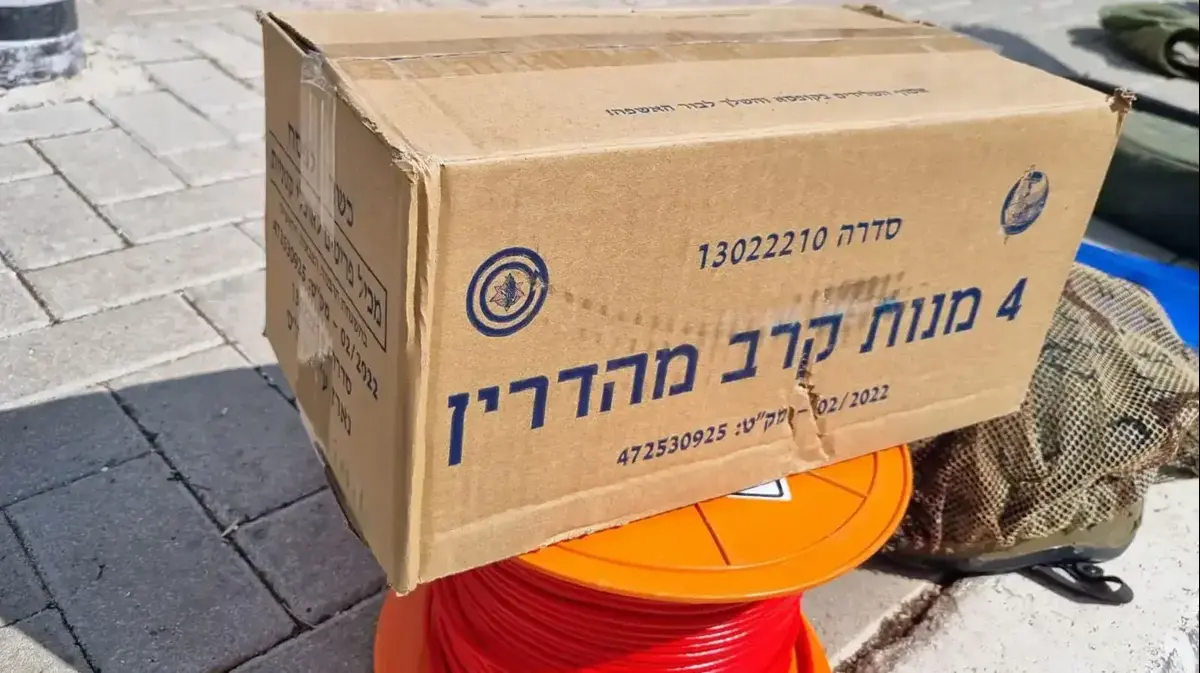Development of battle dishes in the food tech laboratory of Tel Hai College/Nadav Abs
Activity of IDF forces in the Gaza Strip. February 12, 2024/IDF spokesperson
Will IDF soldiers soon be eating a hot combat ration that includes vegan shawarma, bolognese pasta, and mejdera? In recent days, 3,000 combat rations have been distributed to IDF soldiers fighting in the Gaza Strip, which may replace the cold combat rations.
This is a hot dish with important nutritional values for a soldier in a combat situation and adapted to the Israeli taste.
The dish was developed in the foodtech laboratories of the Tel-Hai Academic College with the owners of Prosolv Technologies, Arturo Geifman and Guy Tobi, under the leadership of the Defense Ministry's FDA, the IDF's food branch and a chief medical officer.
According to Dr. Meir Schlissel, senior food technologist and director of the foodtech laboratory in Tel-Hai, "About two years ago we were contacted by the Ministry of Defense and asked to develop a new combat ration.
The first requirement was that it should be palatable to the Israeli palate, and then came additional important requirements: the dish must contain a high level of protein and also have a high level of sodium, in order to provide the fighters with the many salts they lose while sweating while fighting."
Guy Tovi, food engineering expert, The owner of the Prosolv consulting company, and the director of the National Food Institute at Tel Hai Academic College, explains that the basis of the development of the new ration was the idea to change the perception of the battle ration, which had been accepted in the army for decades.
Operation Iron Swords, battle ration of IDF soldiers/image processing, Avi Rokah
"One of the important criteria was a long shelf life; we were asked to develop a cooked dish that would be valid for at least two years and maintain a good texture throughout its shelf life," explains Tobi.
"Therefore, a unique preparation process was carried out and the dish was packed in special bags that are sealed against air and moisture penetration, which can be subjected to a microbial sterilization process and thus allow for a long shelf life. In addition, the dish must have a high nutritional value and a high caloric value, with a minimal weight, in a package that fits comfortably in a backpack and will not catch A lot of space."
Another important criterion that was placed before the developers was that the fighters could eat the dish when it is hot.
In order to heat the dish in the field, the soldiers put the heating pad together with the food bag and a little water into a resealable heating bag and after about 12 minutes the dish is hot.
The contact between the contents of the heating pad and the water causes a reaction that causes the water to boil.
The steam from boiling water and the contact of the special bag with the hot pad heats the food.
The dish also includes tortillas and several sauces: tahini, amba, ketchup, chili and mayonnaise, to be chosen by the fighters.
The long development process included tasting tests with the participation of fighters, improving and upgrading the dish until the final result.
The process was accelerated significantly following the war that broke out on October 7 and in these days thousands of combat rations were distributed to the fighters in Gaza.
"The responses we receive are very enthusiastic" says Dr. Schlissel "Now we are working on developing additional dishes, including meat battle dishes that include pieces of beef and pasta bolognese."
More on the same topic:
Gaza war
War of Iron Swords

